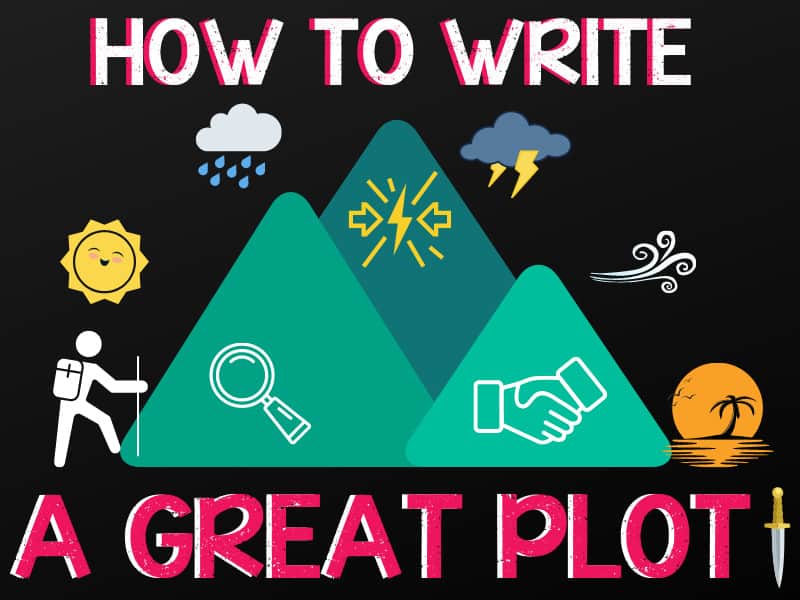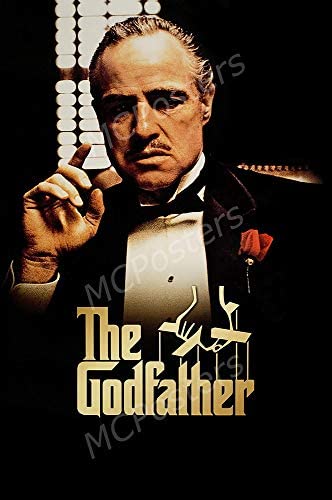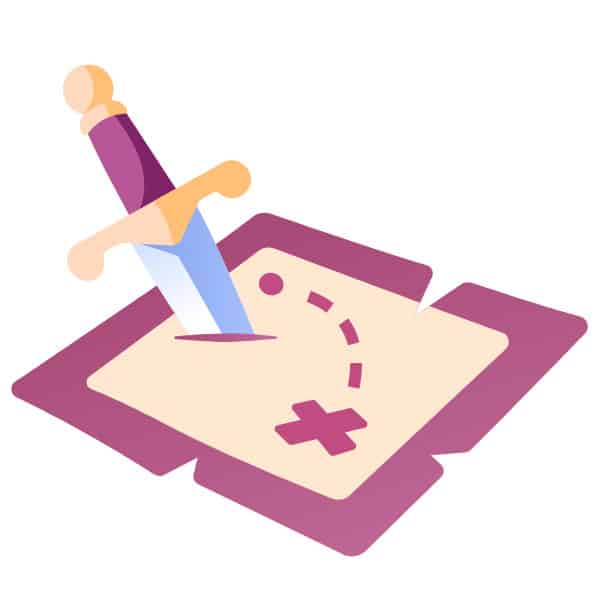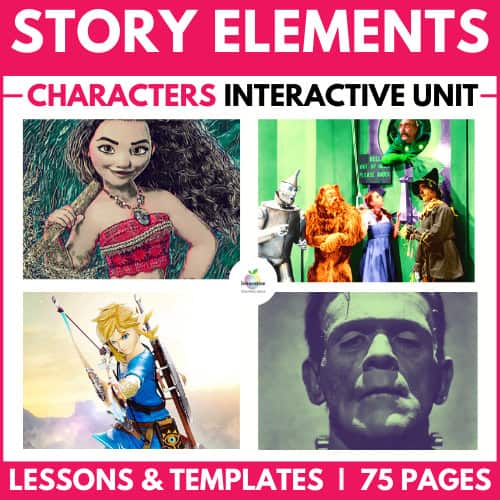
What Is a Plot?

When we talk of a story’s plot, we typically refer to the sequence of cause-and-effect events that make up the storyline, connecting the story elements to build meaning and engagement with an audience.
Think of a plot like a roadmap. navigating you through the highs and lows of the story revolving around characters and setting, which leads us to a conflict and eventual resolution.
A good plot should keep you engaged, surprising you with twists and turns and moving you towards a satisfying conclusion. It’s what makes a story more than just a collection of random events and gives it direction and purpose.
The plot is arguably the most critical element of a story and can be approached from two perspectives; a traditional approach which is the main focus of this guide, known as a Plot- Driven Narrative (or commonly just a plot) and another popular approach that tells a story through the lens of a stories protagonist known as a Character-Driven narrative.
Let’s take a moment to explore the similarities and differences to these storytelling methods.
Plot-Driven Narratives Vs. Character Driven Narratives
These two types of stories account for the narrative structures of most books, movies, plays, and TV dramas. They represent two distinct approaches to storytelling. For students to get good at writing great plots, they should first learn to distinguish between these two perspectives on storytelling.
Character-driven stories focus primarily on the who of the story. They predominantly concern themselves with the inner lives of their protagonists and how events in the outside world affect them psychologically.
In character-driven stories, we follow the struggles and experiences of the story’s characters which usually culminate in a climax that results in a profound change in the life or psychology of the main character.
The critical element of this type of story is character development, which is commonly found in literary fiction.
When exploring a traditional plot or Plot-Driven Narrative, think of a story propelled forward by the events and actions within it. This is what we call a plot-driven narrative. It’s like a boat that’s pushed forward by the mighty waves of the story’s events, with the characters simply along for the ride.
Plot-driven narratives are focused on the “what” of a story rather than the “who.” They’re driven by twists, turns, and unexpected occurrences, with the goal of keeping the audience engaged and entertained. So, if you love a good mystery or action-packed adventure, a plot-driven narrative might be the path for you to pursue when writing a narrative.
Famous Character-Driven Stories
- The Portrait of the Artist as a Young Man by James Joyce
- The Catcher in the Rye by J.D. Salinger
- Steppenwolf by Herman Hesse
- Raging Bull
- The Godfather

Famous Plot-Driven Stories
- Lord of the Rings by JRR Tolkien
- Jurrasic Park by Michael Crichton
- Da Vinci Code by Dan Brown
- Jaws
- Speed

Whether a story is primarily plot-driven or character-driven, it will require well-drawn characters and a solidly constructed plot to be a good story.
In the rest of this article, we’ll look at the plot’s main elements, some specific plots, and how students can create great plots for their own fantastic stories. We’ll also suggest activities to help students hone their skills in these areas.
What Are The key Parts of a Plot?
There are six main elements of plot for students to identify and master. These are:
- Exposition
- Conflict or Inciting Incident
- Rising Action
- Climax
- Falling Action
- Resolution
Below, you’ll find an outline of each element in turn, but if you want to explore these elements in greater detail with your students, check out Our Complete Guide to Narrative Writing here.

1. Exposition
Exposition is all about laying the groundwork. The writer sets the scene in the first paragraphs and introduces the main characters. The exposition orients the reader to the fictional world they are entering.
2. Conflict/Inciting Incident
Every story needs a problem to drive the plot forward. We call this the ‘conflict’ or ‘inciting incident.’ At this stage of the narrative, an incident or a conflict occurs that sees the main character facing a challenge of some sort. This breaks the normality established in the exposition by setting a chain of events in motion that will form the story’s plot.
3. Rising Action
The conflict/inciting event sets off a sequence of causally linked episodes that gradually amp up the dramatic tension as the story builds towards the climax. This process of building tension through raising the stakes is called rising action.
4. Climax
The climax is the dramatic high point of the story, where everything comes to a head. This is where the story’s conflict will ultimately be resolved, usually in a moment of high excitement.
5. Falling Action
As the dramatic tension gets released in the excitement of the climax, the narrative begins to wind down. As the dust settles on the climactic scene, we begin to see the consequences on the characters and the world around them.
6. Resolution/Denouement
Sometimes known as a denouement, the resolution is the plot’s final section, where the conflict’s loose ends are tied up. This section has a finality as it establishes new normalcy in the wake of recent events.
The Classic Three Act Plot Structure Explained
If you are looking for the 5-minute explanation of how to write a strong plot without going into too many details and complexity, allow me to introduce you to the granddaddy of all story structures: the three-act plot. Think of it as a theatrical performance, with each act serving a specific purpose in the storytelling journey.
Act 1, is all about setup: It’s here where you introduce your characters, establish the setting, and create a sense of what’s at stake in the story.
Act 2 is where the drama takes center stage: At this point conflict arises, obstacles are placed in the characters’ way, and tensions rise and grow.
And finally, Act 3 is the grand finale: Where all the story threads come together in a resolution. Loose ends are tied up, conflicts are resolved, and your audience gets the payoff they’ve been waiting for.
So, there it is, next time you’re crafting a story, consider using this tried and true three-act structure to guide your plot and keep your audience engaged.
The & Basic Plot Types (With Prompts)
In the book world, we commonly find plot-driven genre fiction topping the paperback bestseller lists. In fact, most popular fiction known as ‘genre fiction’ is plot-driven.
Genre fiction comes in many forms, for example, science fiction, romance, fantasy, thrillers, and horror, to name but a few.
Whatever the genre, we find many of the same plot types recurring within the well-thumbed pages of these most popular of books. For students to write their own great plots, they’ll need to understand the time-tested seven basic patterns that plots follow.
Let’s take a look at the most common of these plot types along with a writing prompt to get your students to write an example of each.
i. Tragedy
A genre with ancient roots, tragedies focus on events of great sorrow, suffering, distress and/or destruction. With roots in ancient Greek drama, tragedy treats the plot and the themes it raises with a serious and sombre tone.
Examples: Oedipus Rex by Sophocles, The Handmaid’s Tale by Margaret Atwood
Prompt: A story opens with the hero’s untimely death. Can the student go back and tell the story of how events led to such a tragedy?
ii. Comedy
For the ancient Greeks, comedy represented the dramatic opposite of tragedy. Where tragedy is serious and somber, comedy is light-hearted and humorous. Comedy has many subgenres, including sarcasm, parody, farce, satire, slapstick, romantic comedy, screwball, and even dark humor.
Examples: A Midsummer Night’s Dream by William Shakespeare, The Hitchhiker’s Guide to the Galaxy by Douglas Adams.
Prompt: There is a man who, due to a rare condition, cannot lie. No matter how desperately he wants to avoid telling the truth, he just cannot lie. What happens next?

iii. The Quest
As its name suggests, the quest plotline involves a journey of some sort to find a particular person, place, or item. Sometimes the quest is in pursuit of fame or fortune. Often, the thing being sought isn’t as important as the drama that happens along the way.
Examples: The Hobbit by JRR Tolkien, Indiana Jones and the Raiders of the Lost Ark
Prompt: A young girl escapes from her unhappy home and her mean stepmother in search of a better future. Write what happens to her.
iv. The Voyage and Return
In some ways similar to the quest, except there is the added element of the return home. Typically, the hero enters a new land (often magical) where things are very different. Eventually, the hero, changed by events, returns home. Having learned some important lessons, they bring that new knowledge or discovery back home with them.
Examples: Alice in Wonderland by Lewis Carroll, The Wonderful Wizard of Oz by L Frank Baum
Prompt: A prince is engaged to be married to a princess. She has been kidnapped by an evil rival. The prince must journey to find her with the hopes of bringing her home.

v. The Monster
In this type of plot, the hero must eliminate the threat posed by some sort of beast or evil entity such as a dragon, vampire, ghost, or demon. By destroying this monster, the hero will restore order and safety to the world.
Examples: Dracula by Bram Stoker, Jack and the Beanstalk (Traditional)
Prompt: The sea beast arises from the dark depths of the oceans and develops a taste for human flesh. The hero must find a way to stop this evil predator before his whole village is wiped out.
vi. Rebirth
Here, we witness the events leading to the redemption and rebirth of the main character who previously struggled with their place in the world. At the end of this type of story, there is a shift where the world is restored to a balance.
Examples: A Christmas Carol by Charles Dickens, Lion King
Prompt: A cruel orphanage owner stumbles across a foundling in the forest. This event sets in action a chain of events that leads to the orphanage owner’s redemption. Write what happens.
vii. Rags to Riches
This plot type charts the hero’s rise from humble origins through adversity to the heights of fame and fortune.
Examples: Great Expectations by Charles Dickens, The Pursuit of Happyness
Prompt: A neglected child escapes from her unhappy home and struggles to provide for herself in the cold, uncaring city. One day, she meets an unlikely benefactor, beginning a sequence of events that will forever change her life. Write what happens.
How to Write a Great Plot: A Step-by-Step Process
Step 1: Generate Some Ideas
A story begins with the seed of an idea. Students can begin this process by deciding on one of the basic plot types above and then brainstorming a list of five events that might ignite a story.
Encourage the students to draw on their own life experiences, that of their friends and family members, and on things they’ve read about or seen on the news, for example.
Step 2: Create a Premise
Once they have the initial germ of an idea, it’s time to get the premise written down. The premise is a few sentences that express the proposed plot of the story in simple terms.
Step 3: Choose Characters and a Setting
Now it’s time to create the characters and choose the settings for the tale’s action to be played out. Writing brief character profiles, including some bullet points of their backstories, can be a great way to help the student build believable characters.
For settings, creating a collage from photos, pictures, and illustrations can be an effective way to inspire vivid descriptions in the student’s work.
With these elements in place, the students can begin writing the exposition part of their stories.
Step 4: Introduce the Central Conflict

No problem = no story!
Whether it’s called the central conflict, problem, or inciting incident, the student now needs to introduce it to anchor the plot and begin creating tension in the story.
At this point, examining this element in well-known stories in the same genre will be helpful for the student.
Ask the students to think about their favorite books and movies. Can they identify the central conflict in each?
Step 5: Map Out a Path to the Resolution
With the central conflict firmly in place, a set of logical cause-and-effect dominoes now needs to be set up to take the plotline up the ladder of rising action to the climax and subsequent resolution.
Storyboarding is a highly effective way of helping students visualize their plot arc before committing to writing. Remind students of the importance of ensuring each scene connects causally.
When the climax has been reached, the dust will settle in the falling action to reveal the consequences of the actions and see new normalcy established in the resolution.
Tips for Writing a Great Plot
- Start with a strong hook: Begin your story with an interesting and attention-grabbing scene to grab your reader’s attention.
- Know your genre: Study the conventions and expectations of the genre you write in, so you can effectively play within those boundaries.
- Create memorable characters: Develop dynamic and compelling characters that drive the story forward.
- Build conflict: Your story needs conflict, whether it’s internal or external, to keep the plot moving.
- Use the three-act structure: Follow the classic three-act structure of setup, confrontation, and resolution to keep your plot structured and focused.
- Introduce twists and turns: Add unexpected events and plot twists to keep your audience engaged and on their toes.
- Keep it simple: Avoid complicating your plot with too many subplots or unnecessary details.
- Use foreshadowing: Plant hints and clues throughout the story to create suspense and keep your audience guessing.
- Have a clear resolution: Make sure your story has a satisfying conclusion that wraps up loose ends and resolves conflicts.
- Write with passion: Write from the heart, imbuing your plot with your own experiences and emotions to create a story that resonates with your reader.
A COMPLETE UNIT ON TEACHING STORY ELEMENTS
Plot Teaching Strategies and Activities
Following the structural elements laid out above, combined with the conventions of a basic plot type chosen from the seven types above, students should be well-placed to construct a well-ordered plotline.
If the above description of how to write a great plot seems too prescriptive initially, it’s worth noting that there is considerable creative freedom within the structures described in this article.
The plot types listed above have been identified from the shapes and patterns of thousands of our favorite tales told across the centuries rather than being templates that are laid out to be studiously followed. As humans, we are pattern-recognizing machines. It is in patterns that we find meaning.
Teaching Activities
- Story mapping: Have students create visual representations of the events and elements in a story to help them understand the structure of a plot.
- Analyzing plot in literature: Analyze and discuss the plot structure of well-known books and movies to see how different elements contribute to the overall story.
- Plot planning worksheet: Provide students with a worksheet or graphic organizer such as this to plan out their own story, including key events, characters, and conflicts.
- Writing workshops: Encourage students to workshop their own stories with peers, providing feedback on plot structure and pacing.
- Create story arcs: Teach students about the basic story arc and have them practice creating their own arcs for short stories or character arcs for longer works.
Once students get used to these underlying structures, they can begin to let their imaginations run away with them, safe in the knowledge that a coherent story will emerge from their bursts of creativity.



